How To Train A Kitten
Kittens are quick learners, and positive reinforcement is the key to training them for a happy and harmonious household. Here’s a breakdown of how kittens learn and some effective training methods:
Learning Styles of a Kitten:
- Observational Learning: Kittens are keen observers, picking up cues and behaviors from their mother and other cats around them. This is why early socialization with other cats is beneficial.
- Positive Reinforcement: Kittens respond best to positive reinforcement techniques like treats, praise, and petting when they exhibit desired behaviors.
Benefits of Training Your Kitten:
- Preventing Unwanted Behaviors: By teaching them appropriate behaviors early on, you can prevent problems like scratching furniture, jumping on counters, or biting.
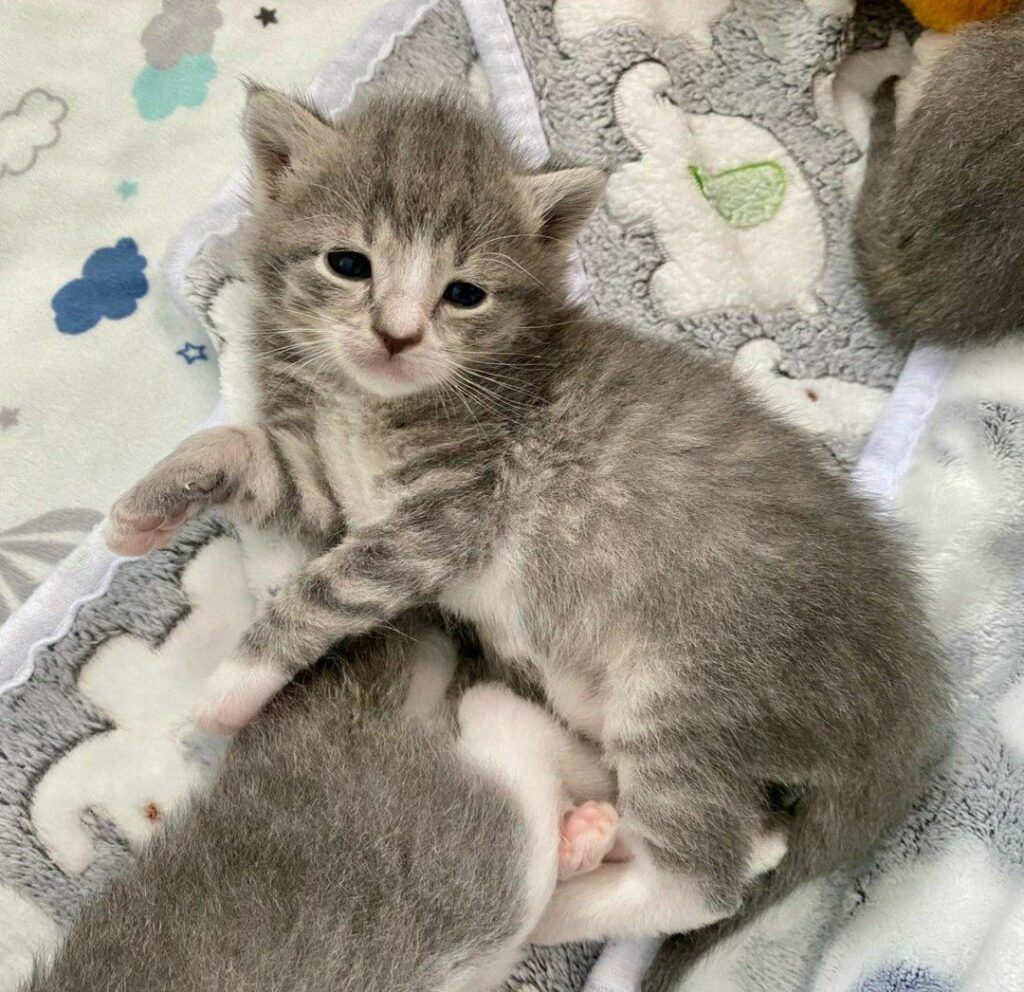
- Building a Strong Bond: Training sessions become positive interactions that strengthen your connection with your kitten.
- Creating a Safe and Happy Home: A well-trained kitten is less likely to engage in destructive behaviors or become anxious due to unfamiliar situations.
Effective Training Techniques:
- Start Early: The window of opportunity for socialization and training is between 2-7 weeks old. However, even older kittens can learn with patience and consistency.
- Positive Reinforcement: Reward good behavior with treats, praise, or petting immediately after the desired action occurs. This creates a positive association with the behavior.
- Short and Sweet Sessions: Kittens have short attention spans. Keep training sessions to 5-10 minutes, 2-3 times a day.
- Be Patient and Consistent: Training takes time and repetition. Use the same cues, commands, and rewards consistently for specific behaviors.
- Make it Fun!: Use toys, positive energy, and a playful approach to keep your kitten engaged and motivated.
What You Can Train:
- Litter Box Use: Most kittens instinctively use the litter box, but you can help by placing it in a quiet, accessible location and keeping it clean.
- Scratching Post Use: Provide a scratching post with a sisal rope or cardboard surface and encourage scratching by placing catnip on it or using a toy to lure them.
- Basic Commands: Simple commands like “sit,” “stay,” or “come” can be taught using treats and a clicker.
- Gentle Play: Teach your kitten bite inhibition by redirecting rough play with a toy and rewarding gentle behavior.
Additional Tips:
- Respect Their Independence: Cats are naturally independent creatures. Don’t force them to interact if they seem uninterested.
- Address Unwanted Behaviors: If your kitten exhibits unwanted behaviors, redirect them with a toy or a firm “no” and then offer them an opportunity to perform a desired behavior for a reward.
- Patience is Key: Accidents happen, especially with young kittens. Be patient, positive, and consistent in your training approach.
By understanding how kittens learn and using positive reinforcement techniques, you can effectively train your kitten and create a loving, well-behaved feline friend.
Its Good For Their Physical And Mental Well-being
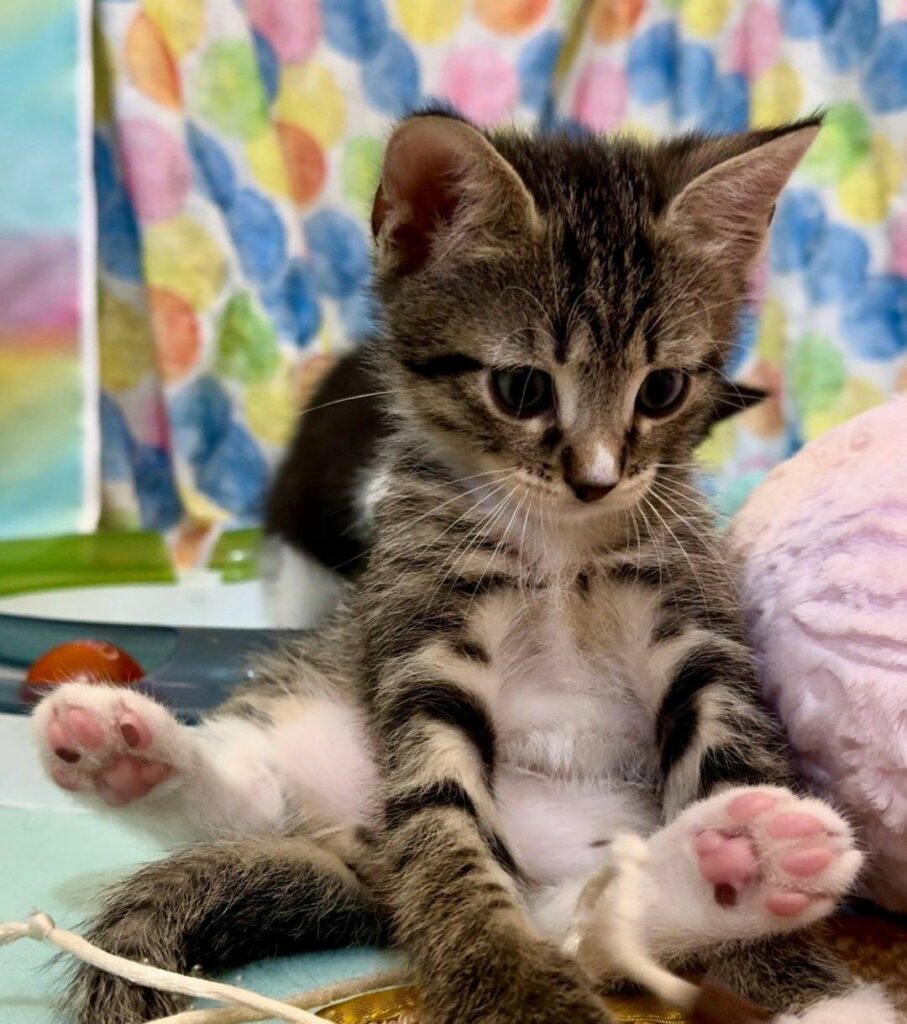
Training your kitten is beneficial for both their physical and mental well-being in several ways:
- Physical Benefits: Training often involves playtime and using toys, which helps kittens burn off energy, stay active, and develop muscle coordination.
- Mental Stimulation: Learning new behaviors challenges your kitten mentally, keeping them engaged and preventing boredom. This mental exercise can also help reduce stress and anxiety.
- Building Confidence: Successfully mastering a new skill or behavior boosts your kitten’s confidence and self-esteem. This can contribute to a happier and more well-adjusted cat.
- Creating Boundaries: Training helps establish boundaries and expectations for appropriate behavior. This creates a sense of security and predictability for your kitten, reducing confusion and potential anxiety.
- Strengthening Your Bond: Positive reinforcement training sessions become positive interactions that strengthen the bond between you and your kitten. It builds trust, mutual respect, and clear communication.
Overall, training your kitten is not just about teaching them tricks, it’s about investing in their overall well-being. It promotes physical activity, mental stimulation, confidence, and a strong bond with you, setting them up for a happy and healthy life.
It Helps Kittens Learn How To Behave
Training your kitten goes far beyond just teaching them tricks. It’s about helping them develop into well-behaved, confident, and happy members of your household. Here’s a closer look at how training benefits your kitten’s understanding of appropriate behavior:
From Feline Instincts to Household Harmony:
- Redirecting Natural Behaviors: Kittens come with a natural set of instincts like scratching, climbing, and pouncing. Training helps them channel these instincts into acceptable behaviors within your home. For example, teaching them to use a scratching post instead of your furniture.
- Setting Boundaries: Training establishes clear expectations for your kitten. Through positive reinforcement, they learn what’s considered good behavior, like using the litter box or playing with toys instead of biting hands.
- Preventing Unwanted Habits: By teaching them desired behaviors, you can prevent them from developing bad habits that can be destructive or frustrating. Imagine a happy home free of scratched furniture, unwanted jumps on counters, or painful nips!
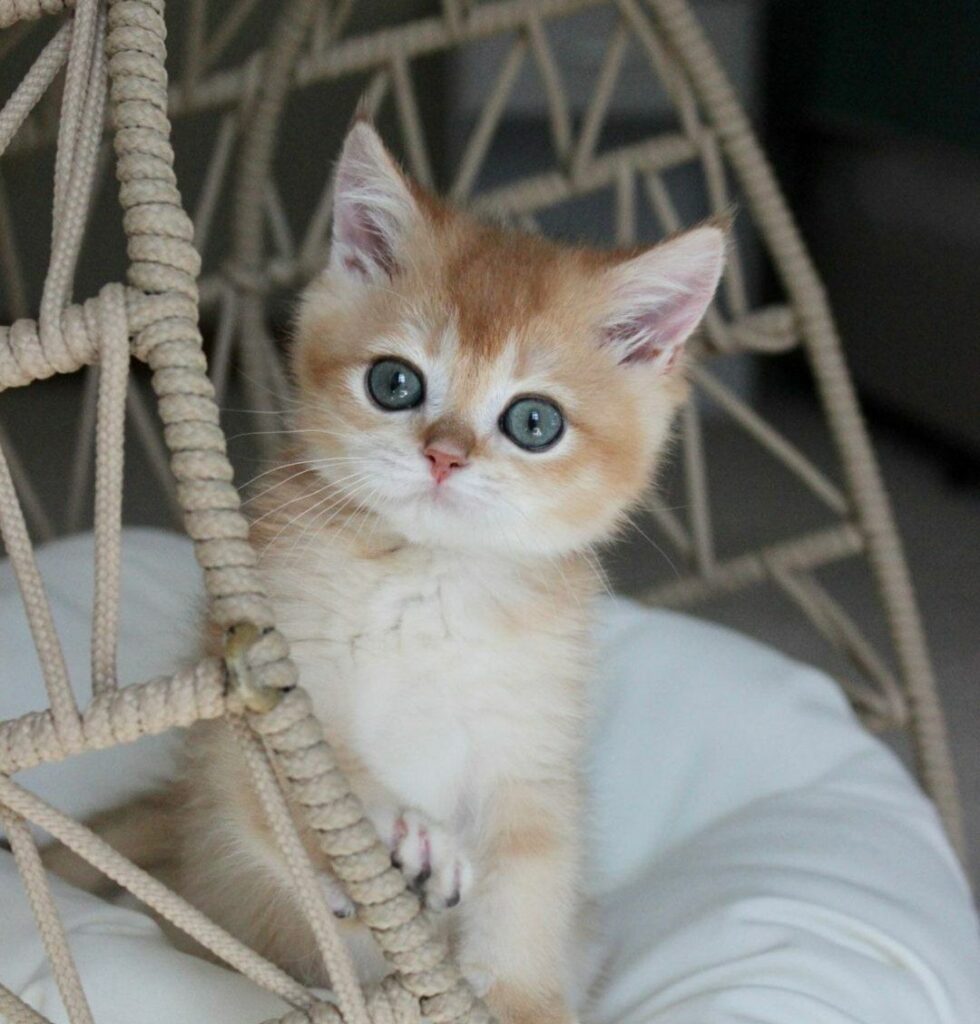
Building a Foundation for Good Manners:
Here’s how training sets the stage for a well-behaved cat:
- Positive Reinforcement: Rewarding good behavior encourages your kitten to repeat it. They learn to associate desired actions with positive outcomes like treats, praise, or petting. This positive connection reinforces good manners.
- Clear Communication: Using consistent commands, cues, and rewards helps your kitten understand what you expect. Think of it as a common language that builds trust and promotes good behavior.
- Building Trust and Respect: Effective training creates a foundation of trust and respect between you and your kitten. They learn that good behavior pleases you and earns them positive reinforcement, fostering a harmonious relationship.
Examples of Good Manners Learned Through Training:
- Litter Box Use: Training ensures your kitten uses the litter box consistently, promoting cleanliness and reducing accidents in your home.
- Scratching Post Use: By redirecting scratching behavior to a designated post, you save your furniture and provide your kitten with an appropriate outlet for their natural instincts.
- Gentle Play: Teaching bite inhibition prevents your kitten from associating play with biting or scratching. This promotes gentle and loving interactions, making playtime enjoyable for both of you.
Remember:
- Start Early: The earlier you begin training, the easier it is for your kitten to learn and develop good habits.
- Patience and Consistency: Training takes time, patience, and repetition. Be consistent in your approach and celebrate even small victories.
- Positive Reinforcement is Key: Reward good behavior and celebrate their successes. Punishment is ineffective with cats and can damage your bond.
By providing consistent and positive training, you can help your kitten develop good manners and become a well-behaved, loving companion. This creates a happy and harmonious home environment where both you and your furry friend can thrive.
It Makes Them Less Nervous In New Settings

Training your kitten goes beyond good manners and physical well-being. It can also play a significant role in making them less nervous in new settings. Here’s how:
Confidence Through Training:
- Building a Foundation: Successfully mastering new skills and behaviors through training boosts your kitten’s confidence and self-esteem. This newfound confidence translates into a calmer and more adaptable cat when faced with unfamiliar situations.
- Positive Reinforcement: Training sessions filled with praise, treats, and positive interactions create happy associations with learning new things. This fosters a willingness to explore and adapt in new environments.
- Exposure Through Training: Training exercises can be used to introduce your kitten to new sights and sounds in a controlled way. For example, using a clicker or unfamiliar toys during playtime exposes them to new stimuli in a positive context.
Training Techniques for Less Nervous Kittens:
Here are some training techniques that can help reduce nervousness in new settings:
- Desensitization and Counterconditioning: Gradually introduce new stimuli (car sounds, vacuum cleaner noises) at low volumes or intensities while pairing them with positive reinforcement like treats or playtime. This helps your kitten learn to associate these noises with positive experiences.
- Focus on Positive Experiences: When venturing out with your kitten, prioritize positive experiences. Choose quiet areas, use a carrier for comfort, and reward calm behavior with treats and praise.
- Start Slow and Short: Don’t overwhelm your kitten. Begin with short exposures to new settings and gradually increase the duration as they become more comfortable.
Overall Benefits:
By training your kitten, you’re not just teaching them commands, you’re:
- Building their confidence: This makes them more adaptable and less likely to be fearful in new situations.
- Creating positive associations: They learn to associate new experiences with positive reinforcement.
- Developing coping mechanisms: Training exercises can help them learn how to manage their emotions in unfamiliar environments.
Remember:
- Patience and Consistency: Building confidence and reducing nervousness takes time and consistent effort. Be patient and celebrate small victories.
- Positive Reinforcement: Always use positive reinforcement techniques to create a safe and trusting training environment.
- Respect Their Limits: Don’t push your kitten beyond their comfort zone. Pay attention to their body language and allow them to retreat if they become overwhelmed.
By incorporating training into your kitten’s life, you’re not just shaping their behavior, you’re helping them develop into confident, adaptable, and well-rounded feline companions who can navigate new situations with a calmer demeanor.
It Makes Them Feel At Home
Training your kitten goes beyond just teaching tricks or good manners. It plays a significant role in helping them feel safe, secure, and ultimately, at home in their new environment. Here’s how:
Building a Foundation of Trust and Security:
- Positive Reinforcement: Training sessions filled with praise, treats, and positive interactions create a strong bond between you and your kitten. This sense of trust and security makes them feel comfortable and supported in their new surroundings.
- Consistent Communication: Using consistent commands, cues, and rewards during training establishes clear communication. Your kitten learns what to expect and feels safe knowing the “rules” of the household.
- Predictability and Control: Mastering new skills and behaviors through training gives your kitten a sense of control over their environment. They learn what actions lead to positive outcomes, reducing anxiety and promoting feelings of safety.
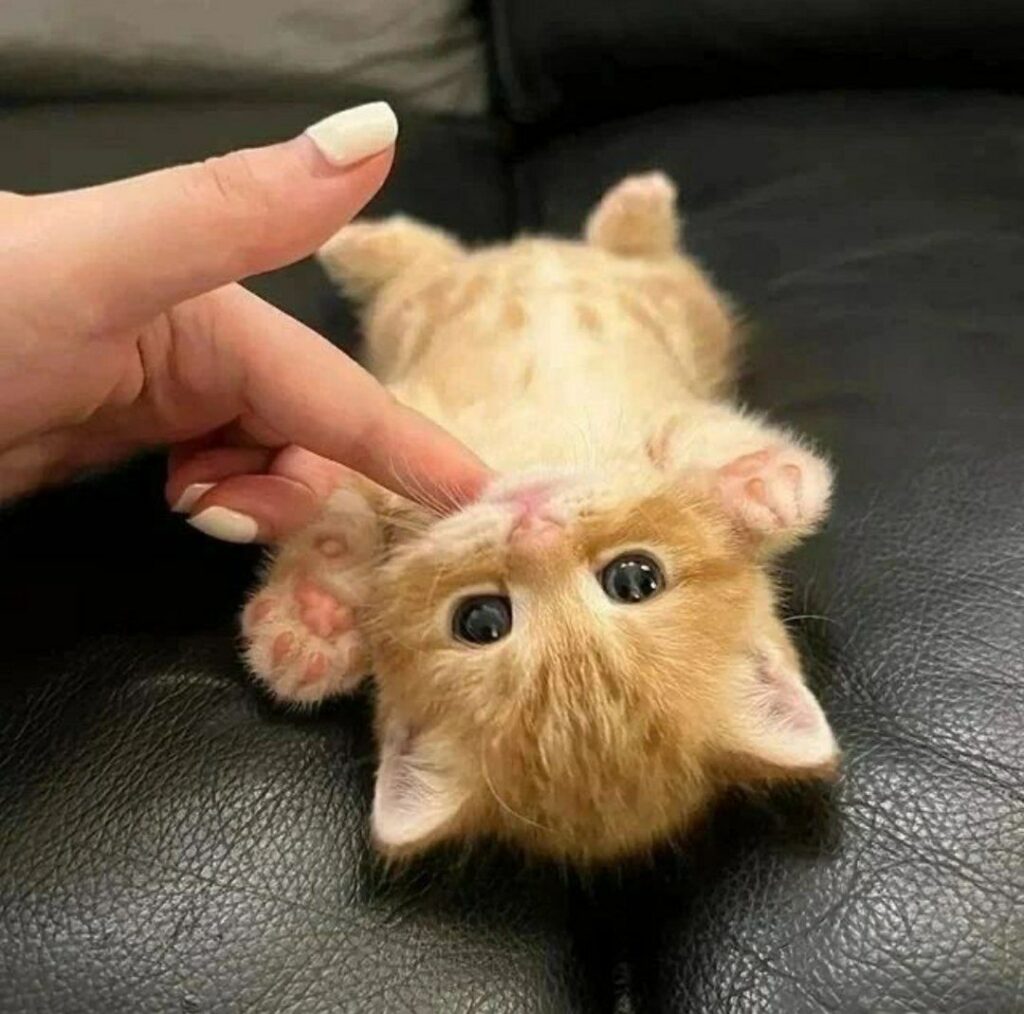
Training Techniques to Make Your Kitten Feel at Home:
Here are some training techniques that can help your kitten feel more comfortable in their new space:
- Litter Box Training: A predictable and reliable litter box location is crucial for your kitten’s comfort. Training them to use it consistently eliminates stress and anxiety related to bathroom routines.
- Safe Space Training: Designate a quiet, cozy area like a crate or a bed as their safe space. Train them to associate this space with comfort and security, providing a retreat during times of stress or overstimulation.
- Positive Associations with Objects: Use positive reinforcement to create positive associations with new objects in the house. For example, pair the sound of the vacuum cleaner with treats or playtime to reduce anxiety.
The Benefits of Feeling at Home:
By helping your kitten feel at home through training, you’re promoting:
- Reduced Stress and Anxiety: A secure and predictable environment reduces stress and anxiety, leading to a happier and healthier kitten.
- Exploration and Confidence: Feeling comfortable allows your kitten to explore their surroundings with more confidence, enriching their lives and strengthening your bond.
- Stronger Bond with You: Positive reinforcement training creates a foundation of trust and understanding, fostering a closer bond between you and your furry friend.
Remember:
- Patience and Consistency: Building trust and security takes time and consistent effort. Be patient and celebrate small victories.
- Positive Reinforcement Always: Focus on positive reinforcement techniques to create a safe and loving environment for your kitten.
- Respect Their Needs: Provide your kitten with hiding spots, vertical spaces, and familiar objects from their previous environment to help them adjust comfortably.
By incorporating training into your kitten’s life, you’re not just teaching them behaviors, you’re helping them feel safe, secure, and ultimately, at home in your loving household. This happy and comfortable environment sets the stage for a strong bond and a lifelong friendship with your feline companion.
Separate ,Calm Litter Box
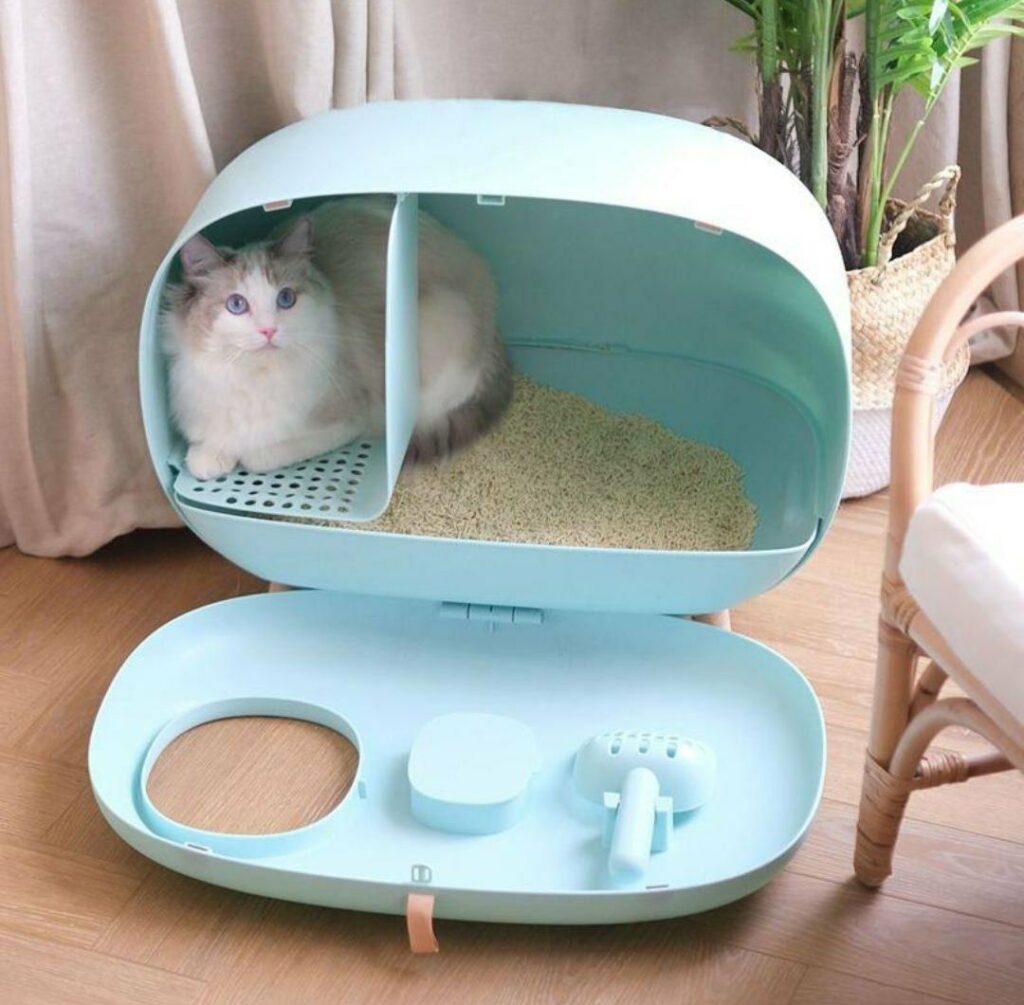
a separate and calm litter box location is crucial for your cat’s well-being. Here’s why it’s important and how to achieve it:
Importance of a Separate Litter Box:
- Privacy: Cats are naturally private creatures, especially when it comes to using the litter box. Having a separate location away from high-traffic areas or their food and water bowls allows them to eliminate comfortably without feeling disturbed.
- Reduced Stress: Feeling stressed or anxious can lead to litter box avoidance in cats. A separate location minimizes distractions and creates a sense of security, promoting relaxed elimination.
- Multiple Cat Households: In multi-cat homes, having a separate litter box for each cat (plus one extra) reduces competition and dominance issues related to litter box use.
Creating a Calm Litter Box Environment:
Here are some tips to ensure your cat’s litter box is a calm and inviting space:
- Location: Choose a quiet, easily accessible corner away from noisy appliances, doorways, or their food and water bowls.
- Covered Box vs. Open Box: Some cats prefer the privacy of a covered box, while others feel more comfortable in an open box. Experiment to see which type your cat prefers.
- Cleanliness: Scoop waste daily and completely clean the litter box with a mild soap solution (avoid harsh chemicals) at least once a week. Clumping litter helps with daily scooping.
- Right-Sized Litter Box: The litter box should be large enough for your cat to turn around comfortably. Bigger is usually better!
- Litter Type: Experiment with different litter types (clumping, clay, recycled paper) to find one your cat likes. Consider unscented litter, as strong fragrances can be deterring.
- Depth of Litter: Fill the litter box with 2-3 inches of litter. This allows them to dig and eliminate comfortably.
Additional Tips:
- Multiple Litter Boxes: Consider having multiple litter boxes, especially in large homes or multi-cat households. Place them in different locations to provide options.
- Addressing Litter Box Issues: If your cat starts avoiding the litter box, consult your veterinarian to rule out any underlying medical conditions.
By providing a separate and calm litter box environment, you’re promoting your cat’s well-being, reducing stress, and encouraging proper litter box use. This creates a happier and more harmonious household for both you and your feline companion.
Use The Same Cat Litter
Once you’ve found a litter your cat likes, it’s generally best to stick with it. Here’s why consistency in litter choice is important:
Why Consistency Matters:
- Comfort and Familiarity: Cats are creatures of habit, and their litter box is a place where they need to feel comfortable and secure. Using the same litter provides a sense of familiarity and reduces potential stress associated with a change.
- Litter Preferences: Cats can develop preferences for litter texture, scent, and dust level. Switching litters disrupts these preferences and might discourage your cat from using the box.
- Urinary Tract Health: Sudden changes in litter can irritate your cat’s urinary tract, potentially leading to bladder infections or discomfort. Consistency helps maintain their urinary health.
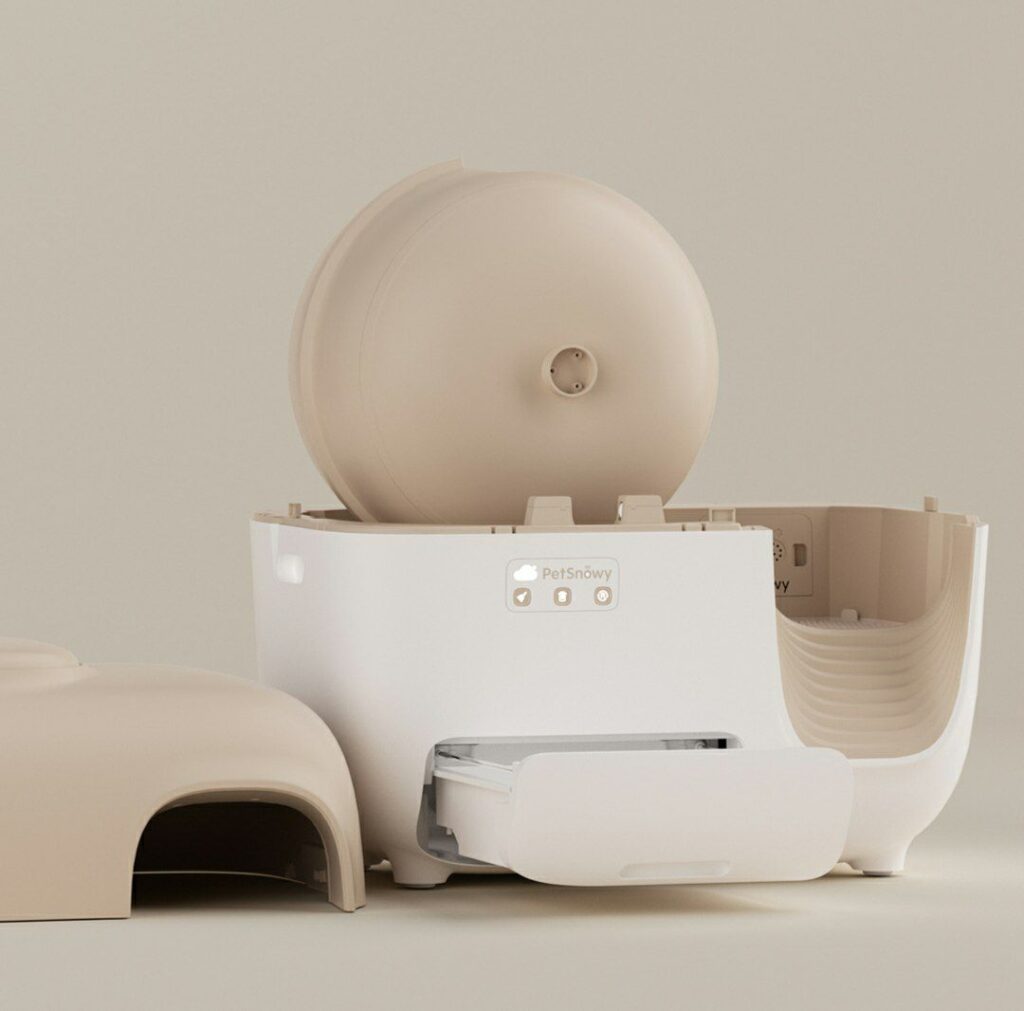
Signs Your Cat Dislikes the Litter:
- Litter Box Avoidance: If your cat starts avoiding the litter box or eliminating outside the box, it could be a sign they dislike the new litter.
- Scratching Excessively: Cats may excessively scratch the litter box if the texture or depth isn’t to their liking.
- Straining or Crying: Discomfort during elimination due to litter texture or irritation can cause your cat to strain or cry while using the box.
Introducing a New Litter (if necessary):
If you absolutely need to switch litters, here’s how to do it gradually to minimize disruption:
- Mix-in Method: Slowly mix the new litter with the old litter over a period of several days, gradually increasing the new litter percentage each day.
- Double Litter Box Approach: If your cat is comfortable using two litter boxes, place one box with the old litter and the other with the new litter. Observe which one they prefer and slowly transition them to the new litter in the preferred box.
Additional Tips:
- Pay Attention to Your Cat’s Preferences: Observe your cat’s behavior to identify their litter preferences. Do they prefer a clumping litter, a specific grain size, or a scented litter?
- Consider Unscented Litter: Strong fragrances can be deterring to some cats. Unscented litter might be a better choice, especially for cats with sensitive noses.
By keeping your cat’s litter consistent, you’re promoting their comfort, reducing stress, and encouraging proper litter box use. This contributes to a happier and healthier feline companion and a more harmonious household environment.
Use After Meals And Sleps
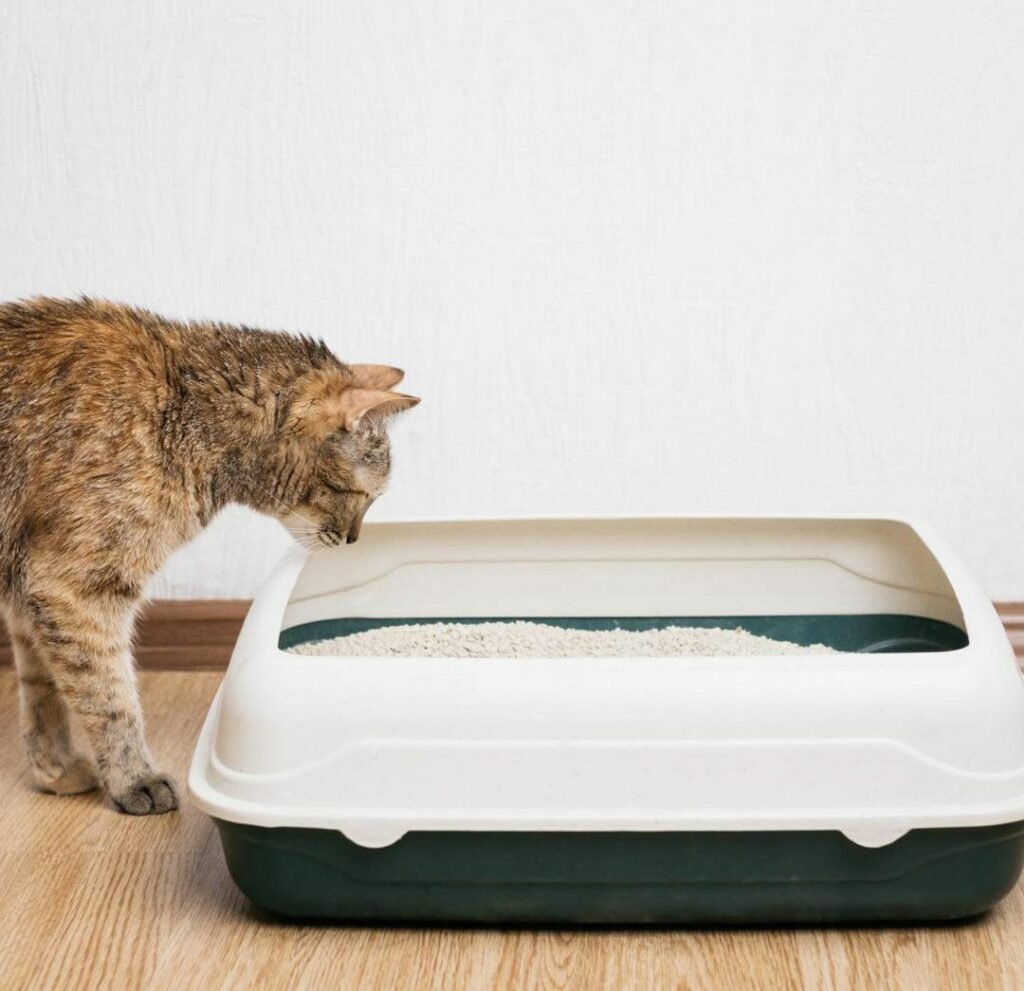
immediately after eating or sleeping , stand your kitten in the litter box . then , if your kitten allows you to , use one of its paws to scratch at the litter.
however There’s no scientific evidence or strong reason to use cat litter after meals and sleeps. Cats are actually quite good at self-grooming and eliminating when they need to. Here’s why the after-meals-and-sleeps litter box routine might not be necessary:
- Natural Elimination Habits: Cats typically eliminate after they eat and wake up from sleep, but they don’t need immediate access to a litter box right after. They will naturally seek it out when they’re ready.
- Stressful Routine: Having the litter box right next to their food or resting area might be stressful for some cats. Ideally, these areas should be separate and calm for your cat’s well-being.
- Multiple Litter Boxes: The best practice is to have multiple litter boxes (ideally one per cat, plus one extra) placed in different quiet and easily accessible locations throughout your house. This provides options and reduces competition, especially in multi-cat households.
Here’s what’s more important for litter box habits:
- Cleanliness: Scoop waste daily and completely clean the litter box with a mild soap solution (avoid harsh chemicals) at least once a week. Clumping litter helps with daily scooping.
- Location: Choose quiet, easily accessible corners away from noisy appliances, doorways, or their food and water bowls.
- Right-Sized Litter Box: The litter box should be large enough for your cat to turn around comfortably. Bigger is usually better!
- Litter Type: Experiment with different litter types (clumping, clay, recycled paper) to find one your cat likes. Consider unscented litter, as strong fragrances can be deterring.
- Depth of Litter: Fill the litter box with 2-3 inches of litter. This allows them to dig and eliminate comfortably.
By focusing on these factors, you can create a comfortable and inviting litter box environment that encourages your cat to use it naturally whenever they need to.
Pay Attention To Body Language
Paying attention to your cat’s body language can be very helpful in recognizing when they need to use the litter box. Here are some key signs to watch for:
Make sure you keep an eye on your kitten at other times . If they look like they need to go , simply stand them in their litter box
Subtle Signals Your Cat Needs to Use the Litter Box:
- Restlessness and Pacing: If your cat seems restless, pacing around the house, or exhibiting repetitive behaviors like excessive licking, it could be a sign they’re searching for the litter box.
- Vocalizations: Some cats might meow or vocalize more frequently when they need to eliminate. This vocalization might be directed at you or simply a general increase in meows.
- Elimination Outside the Box: If your cat starts eliminating outside the litter box, it’s a clear sign something is wrong. This could be due to a dirty litter box, a new litter they dislike, or a medical issue. However, it can also be a sign they’re giving you a heads-up that they need to go.
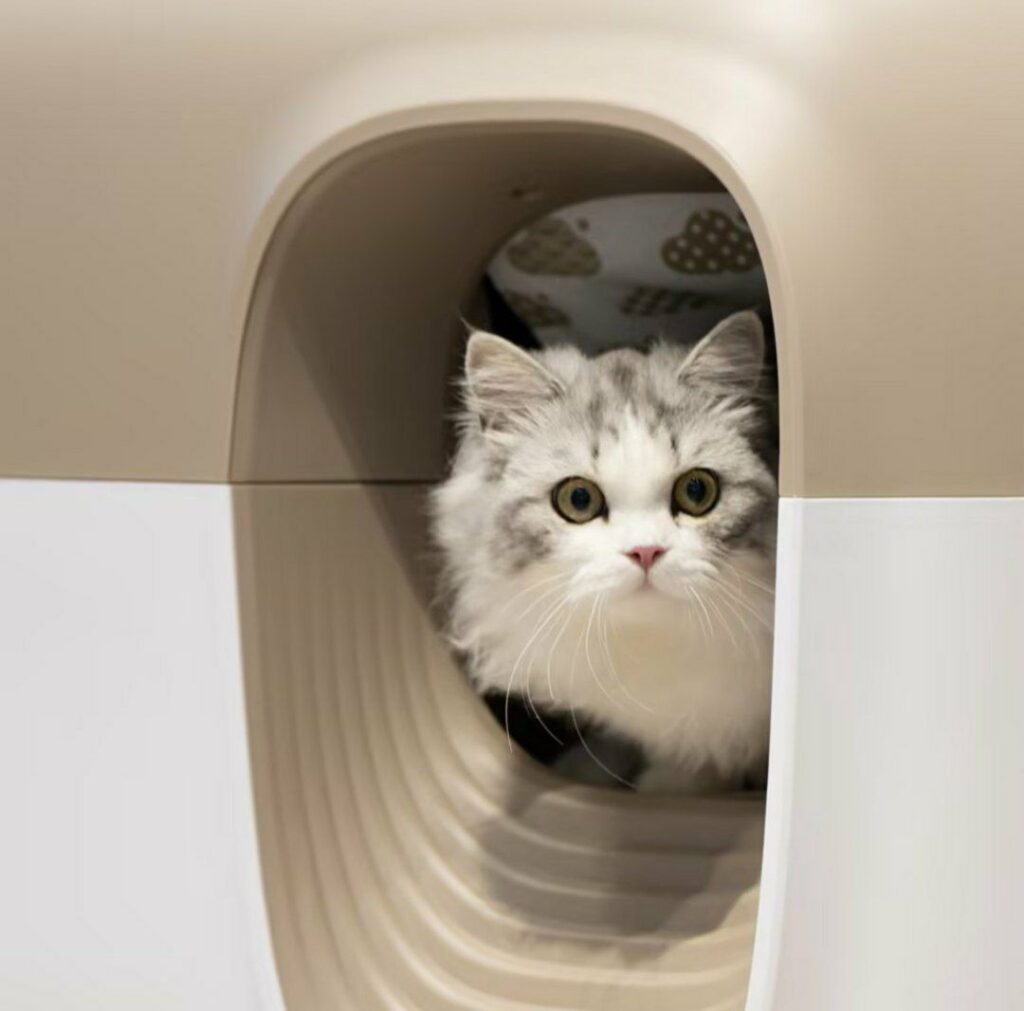
Body Language Cues:
- Tail Position: A low or tucked tail can indicate anxiety or discomfort. Pay attention to a sudden change in tail position, especially if it’s accompanied by other signs.
- Elimination Stance: If your cat crouches low to the ground and starts digging or sniffing around, it’s a strong sign they’re looking for a place to eliminate.
- Straining: If you observe your cat straining or crying while using the litter box, it could indicate discomfort or a urinary tract issue. Consult your veterinarian if you notice this behavior.
What to Do When You See These Signs:
- Guide Them to the Litter Box: If you notice your cat exhibiting any of these signs, gently guide them towards the litter box. This might help them relieve themselves and avoid accidents.
- Monitor Litter Box Habits: Pay attention to your cat’s usual litter box habits. Knowing their typical elimination frequency can help you anticipate their needs and avoid potential accidents.
Additional Tips:
- Multiple Litter Boxes: Having multiple litter boxes (one per cat, plus one extra) in different locations throughout the house can prevent accidents, especially in larger homes or multi-cat households.
- Cleanliness: Maintain a clean litter box! Scoop waste daily and completely clean the box with a mild soap solution (avoid harsh chemicals) at least once a week.
- Consider Veterinary Checkup: If you notice any significant changes in your cat’s litter box habits, consult your veterinarian to rule out any underlying medical conditions.
By being observant and understanding your cat’s body language, you can become more attuned to their needs and provide timely access to the litter box. This promotes a clean and harmonious living environment for you and your feline friend.
Avoid Punishments If They Pee outside The Litter Box
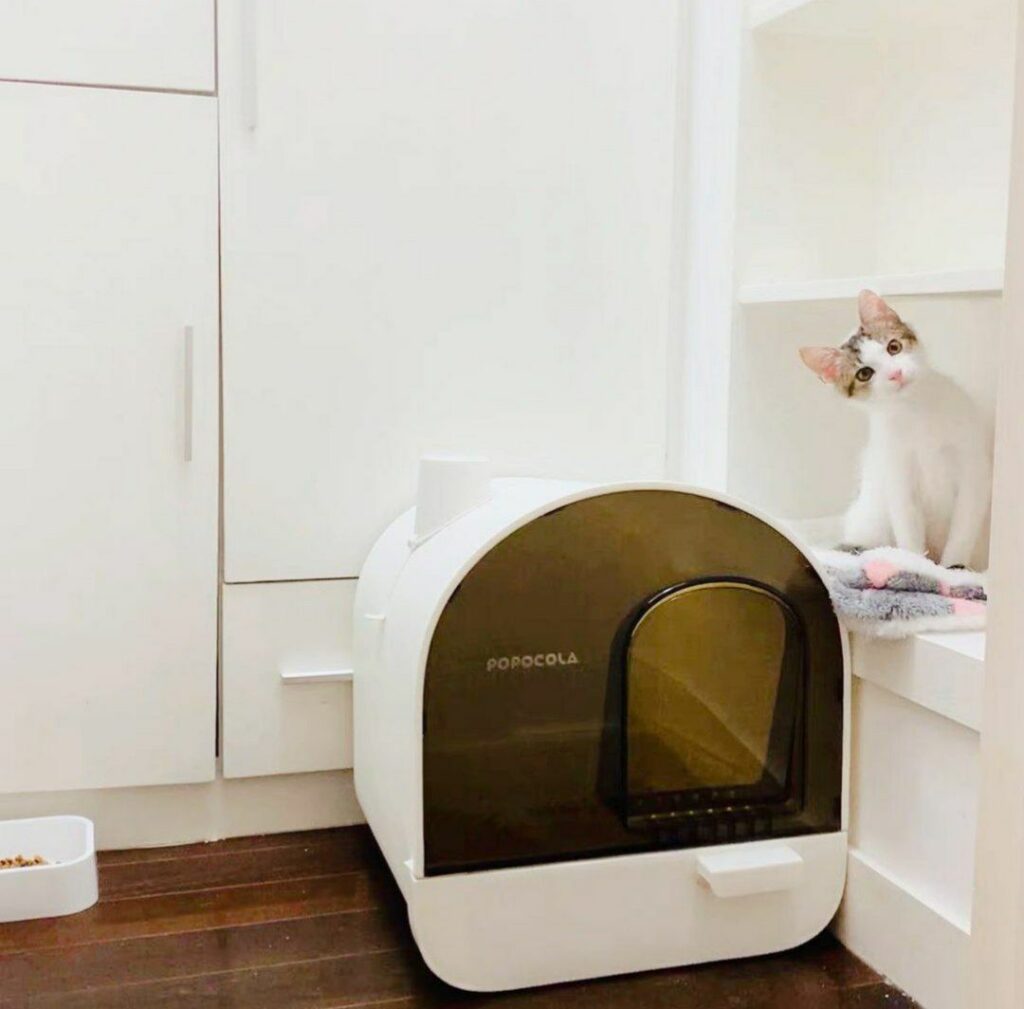
Punishing your cat for peeing outside the litter box is counterproductive and can actually make the problem worse. Here’s why punishment is not the answer and what to do instead:
Why Punishment Doesn’t Work:
- Stressful and Confusing: Cats don’t associate punishment with past actions. They might become fearful of you or the litter box itself, leading to more accidents.
- Underlying Medical Issues: Urinary tract infections, bladder stones, or other medical conditions can cause inappropriate elimination. Punishment won’t address the root cause.
- Behavioral Issues: Stress, anxiety, or changes in their environment can cause litter box avoidance. Punishment doesn’t address the behavioral trigger.
Positive Reinforcement is Key:
- Rewarding Use of the Litter Box: When your cat uses the litter box, celebrate with praise, treats, or petting. This creates a positive association with the desired behavior.
- Clean Up Accidents Properly: Use an enzymatic cleaner specifically designed for pet accidents. This removes any lingering odors that might attract your cat to eliminate in the same spot again.
- Make the Litter Box Appealing: Ensure the litter box is clean, accessible, and in a quiet location. Experiment with different litter types to find one your cat prefers.
Troubleshooting Litter Box Issues:
Here are some steps to help identify and address the reason behind your cat’s elimination problems:
- Schedule a Vet Visit: Rule out any underlying medical conditions that could be causing the issue.
- Consider Stressful Changes: Have there been any recent changes in your cat’s environment, like a new pet or a move? Address any potential stressors that might be contributing to the problem.
- Provide Multiple Litter Boxes: In multi-cat households or larger homes, having multiple litter boxes (one per cat, plus one extra) in different locations can be helpful.
Additional Tips:
- Patience and Consistency: Addressing litter box issues can take time and patience. Remain consistent with your approach and positive reinforcement techniques.
- Positive Cat Interactions: Focus on positive interactions with your cat throughout the day. Playtime, petting, and affection can strengthen your bond and reduce stress.
By avoiding punishment and focusing on positive reinforcement, a clean litter box environment, and addressing the underlying cause, you can encourage your cat to use the litter box appropriately. This promotes a happy and harmonious household for both you and your feline companion.
Size Of The Litter Box
The size of the litter box could definitely be a reason why your kitten is peeing outside of it. Here’s why a spacious litter box is important and some tips for choosing the right size:
Why Size Matters:
- Comfort and Space: Kittens need enough space to comfortably turn around, dig, and eliminate within the litter box. A cramped litter box can feel uncomfortable and deter them from using it.
- Natural Instincts: Cats have a natural instinct to dig and bury their waste. A small box might not allow them to express this behavior freely.
- Feeling Safe and Secure: A larger litter box can provide a sense of security and privacy, making it more appealing for your kitten to eliminate.
Choosing the Right Size Litter Box:
- General Rule: A good rule of thumb is to choose a litter box that is at least 1.5 times the length of your kitten from their nose to the base of their tail.
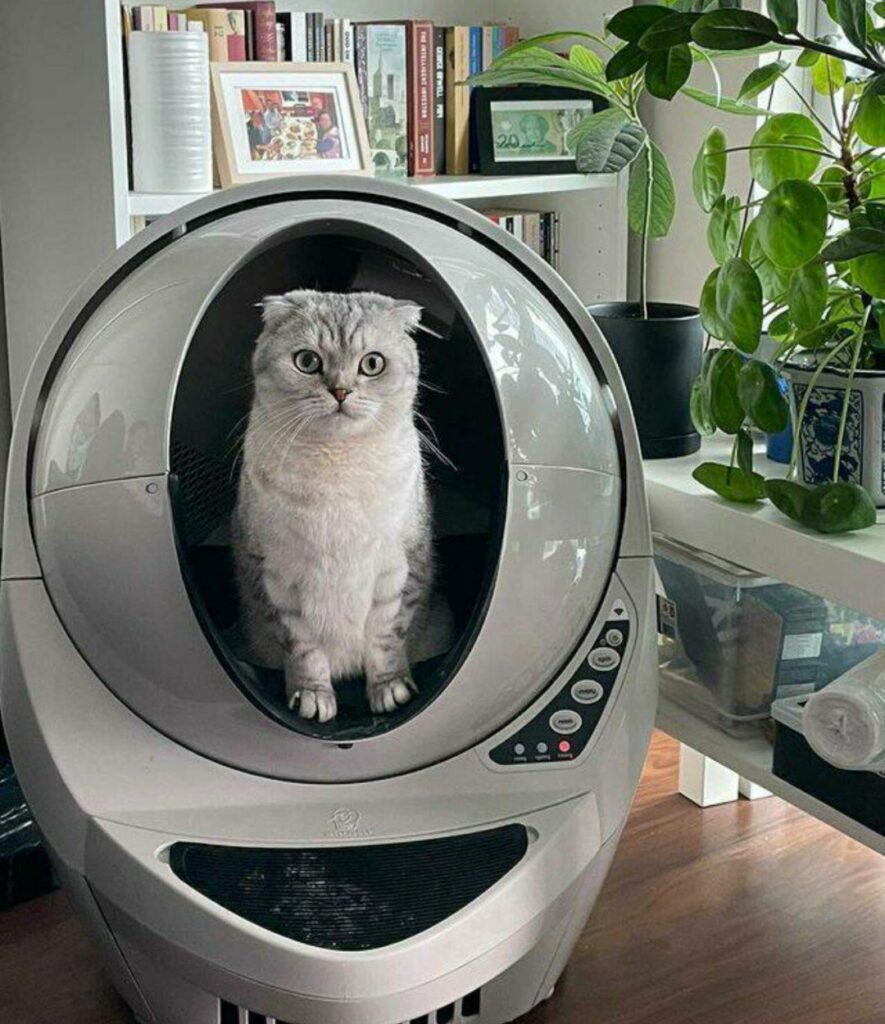
- Room to Grow: Kittens grow quickly! Consider getting a litter box that will be large enough for them even when they’re fully grown.
- Top-Entry vs. Open Box: Some cats prefer top-entry litter boxes that provide a sense of security. However, kittens might find it easier to enter and exit an open box. Experiment to see which type your kitten prefers.
Additional Tips:
- Multiple Litter Boxes: Especially in larger homes or multi-cat households, consider having multiple litter boxes (one per cat, plus one extra) in different locations. This provides options and reduces competition.
- Cleanliness: Maintain a clean litter box! Scoop waste daily and completely clean the box with a mild soap solution (avoid harsh chemicals) at least once a week. Clumping litter helps with daily scooping.
- Location: Choose a quiet, easily accessible corner away from noisy appliances, doorways, or their food and water bowls.
By providing a spacious and clean litter box in a calm location, you’re creating a more inviting environment that encourages your kitten to use it comfortably. This promotes proper litter box habits and a happier household for both you and your furry friend.
Location Of The Litter Box
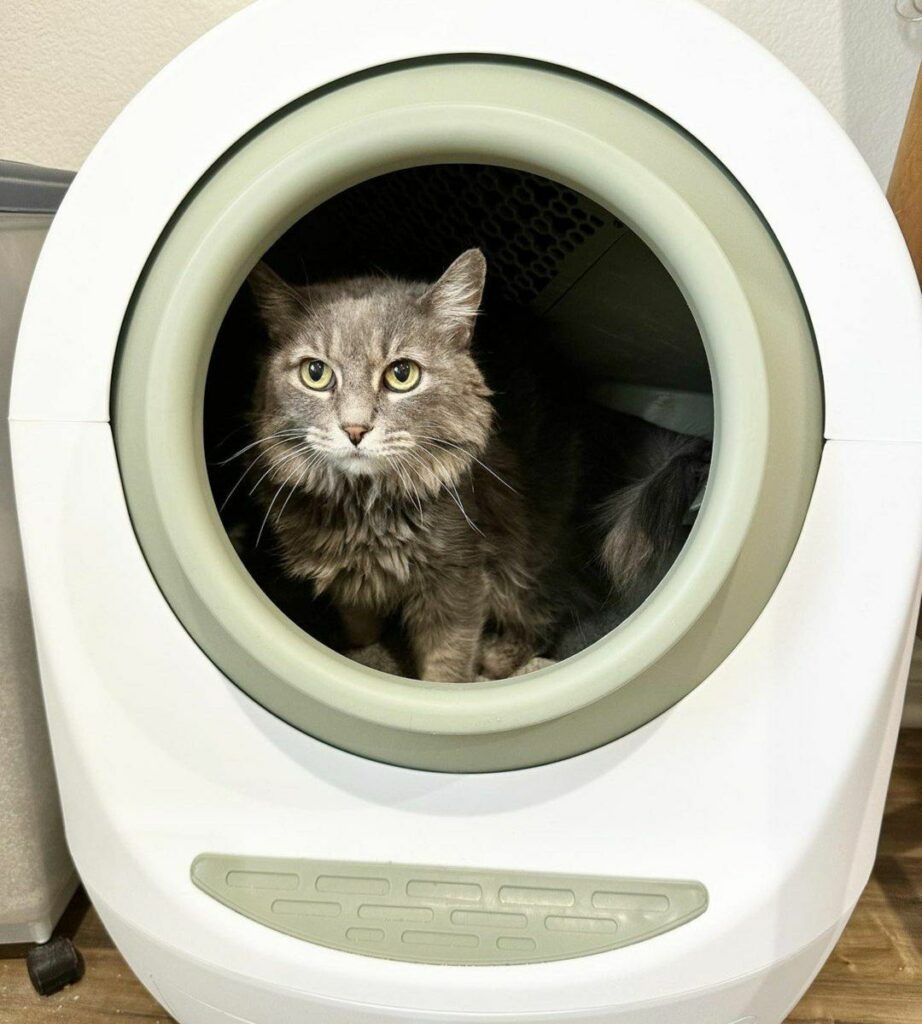
The location of the litter box plays a crucial role in how comfortable your kitten feels using it. Here’s why a calm and strategic placement is important, and some tips for choosing the ideal spot:
Finding the Perfect Litter Box Location:
- Privacy and Quiet: Cats are naturally private creatures, especially when it comes to elimination. Avoid placing the litter box in high-traffic areas, hallways, or laundry rooms. Choose a quiet corner away from noisy appliances or the main entrance.
- Separate from Food and Water: In nature, cats wouldn’t eliminate near their food source. Respect this natural instinct by placing the litter box in a separate location from your kitten’s food and water bowls.
- Easy Access and Exit: The litter box should be easily accessible for your kitten. Avoid placing it behind furniture, in tight corners, or on high shelves. They need to be able to enter and exit comfortably.
- Multiple Floors (if applicable): In multi-story homes, consider having a litter box on each floor to avoid long journeys for your kitten, especially if they’re young.
Additional Tips:
- Observe Your Kitten: Pay attention to where your kitten seems most comfortable eliminating. This might give you clues about their preferred location for the litter box.
- Multiple Litter Boxes: In larger homes or multi-cat households, consider having multiple litter boxes (one per cat, plus one extra) in different quiet locations. This provides options and reduces competition.
- Consider a Litter Box Enclosure: Some cats appreciate the extra privacy and security offered by a covered litter box enclosure. However, ensure proper ventilation to avoid odor build-up.
By creating a calm, private, and easily accessible location for the litter box, you’re encouraging your kitten to use it comfortably and promoting proper litter box habits. This leads to a happier and more harmonious household for both you and your feline companion.
Avoid Disturbing Them While They're Using The Litter Box
It’s important to give your kitten privacy and avoid disturbing them while they’re using the litter box. Here’s why creating a positive association with the litter box is crucial and how to achieve it:
Privacy Promotes Comfort:
- Natural Instincts: Cats are naturally vulnerable when eliminating, and having an audience can be stressful for them. Privacy allows them to relax and use the litter box comfortably.
- Negative Associations: Being watched or startled while using the litter box can create a negative association. This might lead to avoidance or inappropriate elimination in the future.
- Building Trust: Respecting your kitten’s privacy during this vulnerable time helps build trust and strengthens your bond.
Creating a Positive Litter Box Experience:
- Cleanliness: Maintain a clean litter box! Scoop waste daily and completely clean the box with a mild soap solution (avoid harsh chemicals) at least once a week. Clumping litter helps with daily scooping.
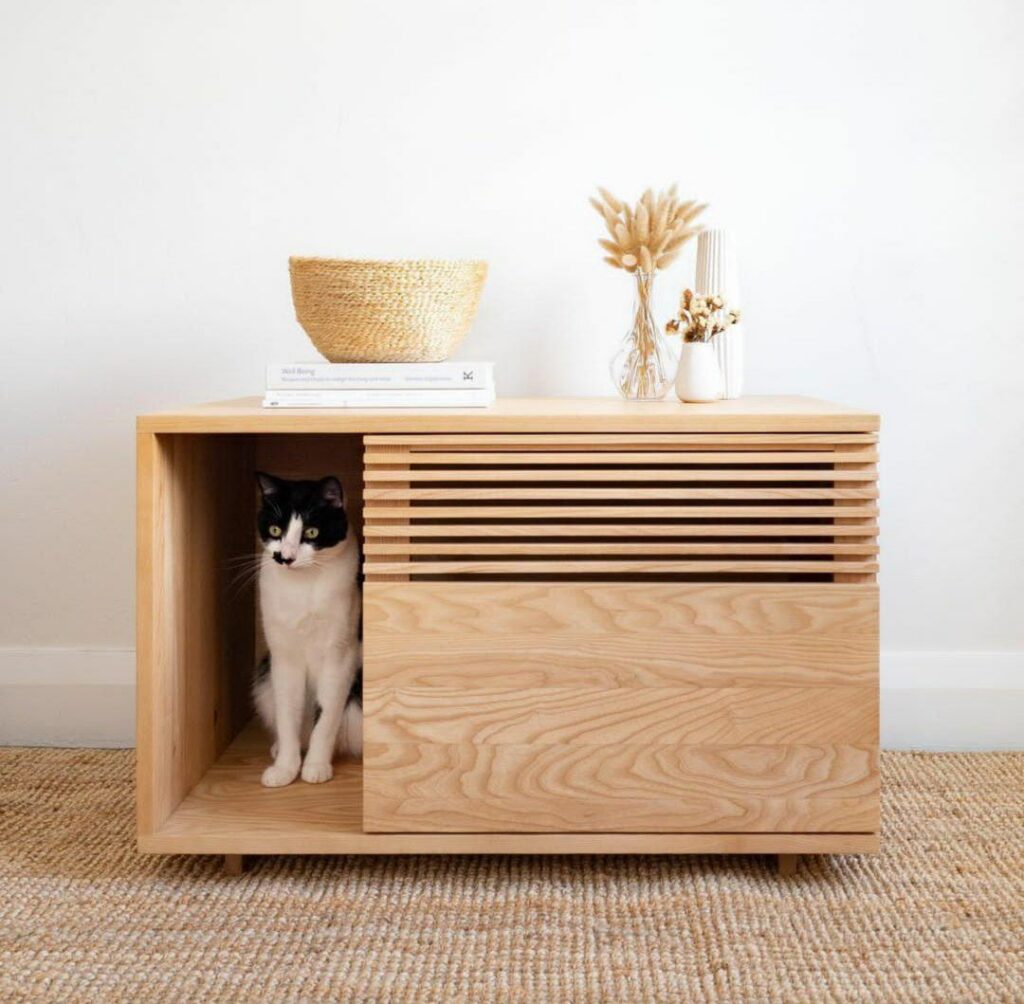
- Right-Sized Litter Box: Choose a litter box that is large enough for your kitten to turn around comfortably. Bigger is usually better!
- Location: Place the litter box in a quiet, easily accessible corner away from noisy appliances, doorways, or their food and water bowls.
- Positive Reinforcement: When you catch your kitten using the litter box, reward them with praise, treats, or petting. This creates a positive association with the desired behavior.
- Patience: Learning proper litter box habits takes time and patience. Be consistent with your approach and avoid getting discouraged.
Additional Tips:
- Multiple Litter Boxes: In larger homes or multi-cat households, consider having multiple litter boxes (one per cat, plus one extra) in different locations. This provides options and reduces competition.
- Observe from a Distance: You can still keep an eye on your kitten from a distance to ensure they’re using the litter box and not eliminating elsewhere.
- Address Underlying Issues: If your kitten persistently avoids the litter box, consult your veterinarian to rule out any medical conditions that might be causing discomfort.
By providing a clean, comfortable litter box in a private location, and avoiding any disturbances, you’re encouraging your kitten to use it without stress. This promotes positive litter box habits and a happier household for both you and your feline friend.
Attract Them By Smell Will Encourage your Kitten To Stay Away Of Your Furniture
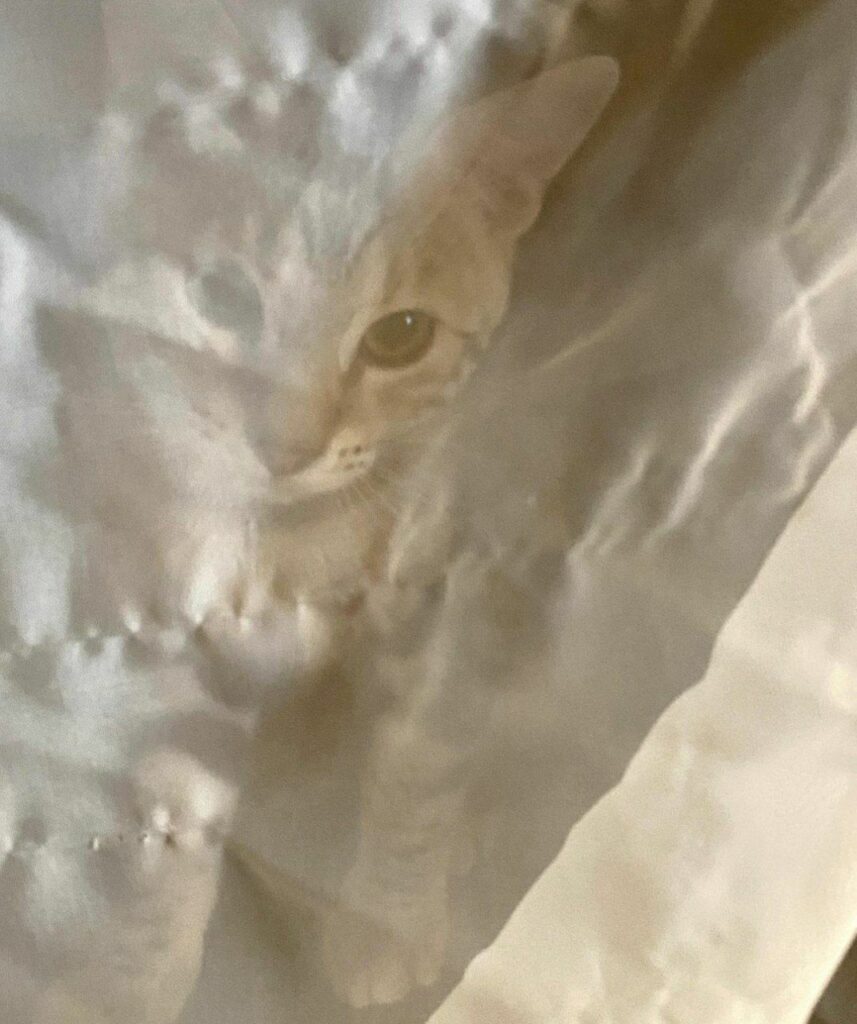
Attracting kittens with smells to deter them from furniture isn’t ideal. Here’s why it might not work and some better alternatives:
Why Smell Attractants Don’t Work Well:
- Unpleasant Scents Can Backfire: Strong smells like citrus or essential oils, while disliked by cats, can be overwhelming and stressful. This might make them avoid the entire area, including the litter box.
- Not Addressing the Root Cause: Scratching furniture is a natural behavior for kittens. It helps them sharpen claws, stretch, and mark their territory. Attracting them away doesn’t address the underlying need.
Positive Reinforcement and Alternatives:
- Provide Scratching Posts: Offer several scratching posts made from different materials (sisal, cardboard) in various locations. Place them near where your kitten likes to scratch furniture.
- Positive Reinforcement: When your kitten uses the scratching post, praise them with treats or petting. This creates a positive association with the desired behavior.
- Redirect Unwanted Behavior: If you catch your kitten scratching furniture, gently redirect them to the scratching post with a toy or enticing sound.
- Trim Claws Regularly: Regularly trimming your kitten’s claws can help minimize potential damage to furniture.
Additional Tips:
- Cover Enticing Furniture: Temporarily cover tempting furniture with furniture covers or throws that are less appealing for scratching.
- Playtime: Provide your kitten with plenty of interactive playtime to burn energy and redirect scratching urges.
- Patience and Consistency: Training takes time and patience. Be consistent with providing scratching alternatives and redirecting unwanted behavior.
Focus on creating a positive and enriching environment for your kitten with scratching posts that fulfill their natural needs. This, combined with positive reinforcement and redirection, will be more effective in the long run than using deterrents with unpleasant smells.
Make Scratching Part Of Playtime
Integrating scratching into playtime is a fun and engaging way to encourage your kitten to use scratching posts and deter them from scratching furniture. Here’s how you can make scratching part of playtime:
Interactive Play with Scratching Posts:
- Dangling Toys: Attach dangling toys like feather wands or catnip-filled mice to the scratching post. This entices your kitten to bat, swat, and climb the post while engaging in play.
- Scratching Sounds: Some scratching posts come with built-in crinkle sounds or dangling toys that make noise when touched. These sounds can pique your kitten’s curiosity and encourage them to explore and scratch the post.
- Catnip Magic: Sprinkle a small amount of catnip (be mindful of overdoing it) on the scratching post to make it even more enticing for your kitten to roll around, rub against it, and scratch.
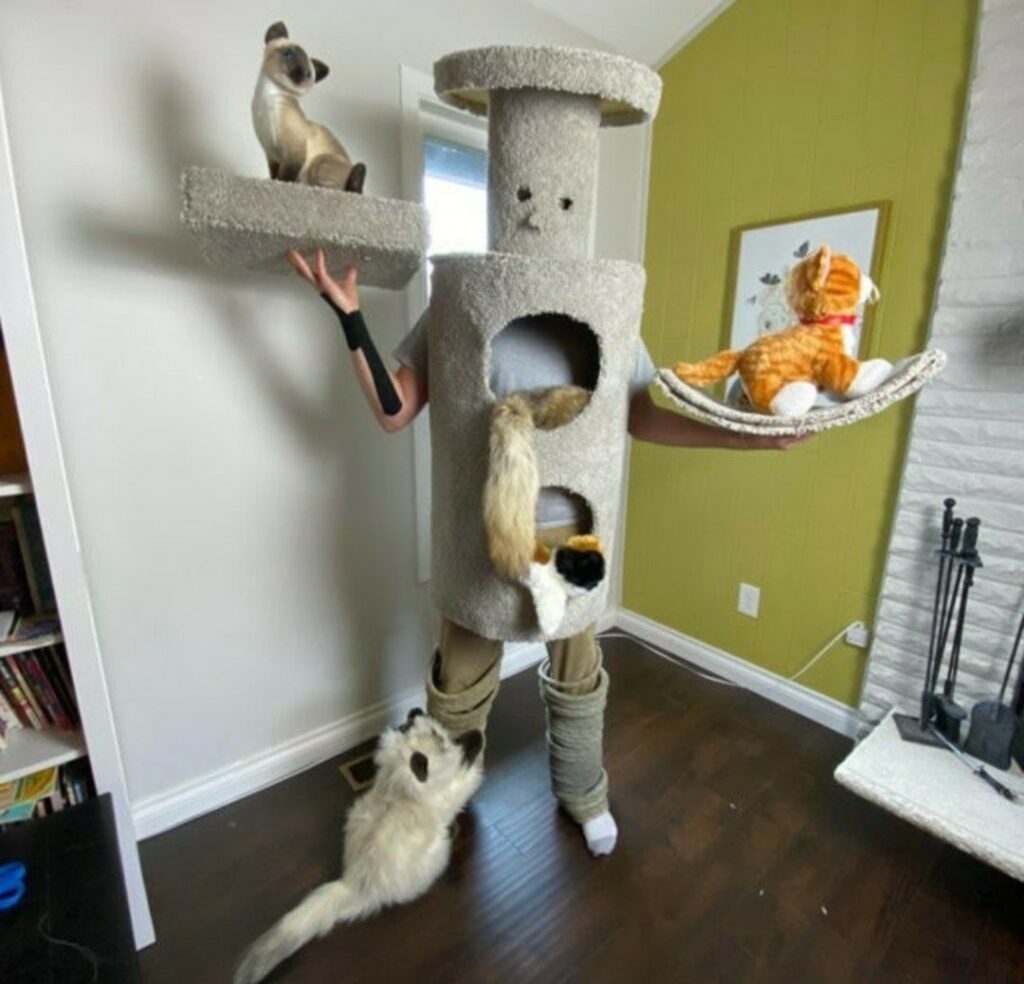
Play Techniques that Encourage Scratching:
- Mimic Scratching: Use a toy mouse or another object to mimic scratching motions on the post. This can spark your kitten’s interest and encourage them to copy the behavior.
- Reward Playful Scratching: When your kitten uses the scratching post during playtime, shower them with praise, treats, or petting. This positive reinforcement strengthens the association between scratching and fun.
- Rotate Toys: Keep things interesting by rotating different toys you use for scratching play. This helps maintain your kitten’s engagement and prevents boredom.
Additional Tips:
- Multiple Scratching Posts: Provide several scratching posts in different locations throughout your house, especially in areas where your kitten likes to scratch furniture. This gives them options and makes scratching readily available.
- Variety of Textures: Offer scratching posts with different textures like sisal, cardboard, or carpet to cater to your kitten’s preferences. Experiment and see which type they gravitate towards most.
- Vertical Space: Cats love vertical space. Consider tall scratching posts that allow them to stretch and scratch comfortably.
By incorporating scratching into playtime, you’re not only providing a healthy outlet for your kitten’s natural behavior but also creating a positive and interactive experience. This builds a strong bond between you and your furry friend while keeping your furniture safe from unwanted scratches.
Praise Your Kitten For Scratching
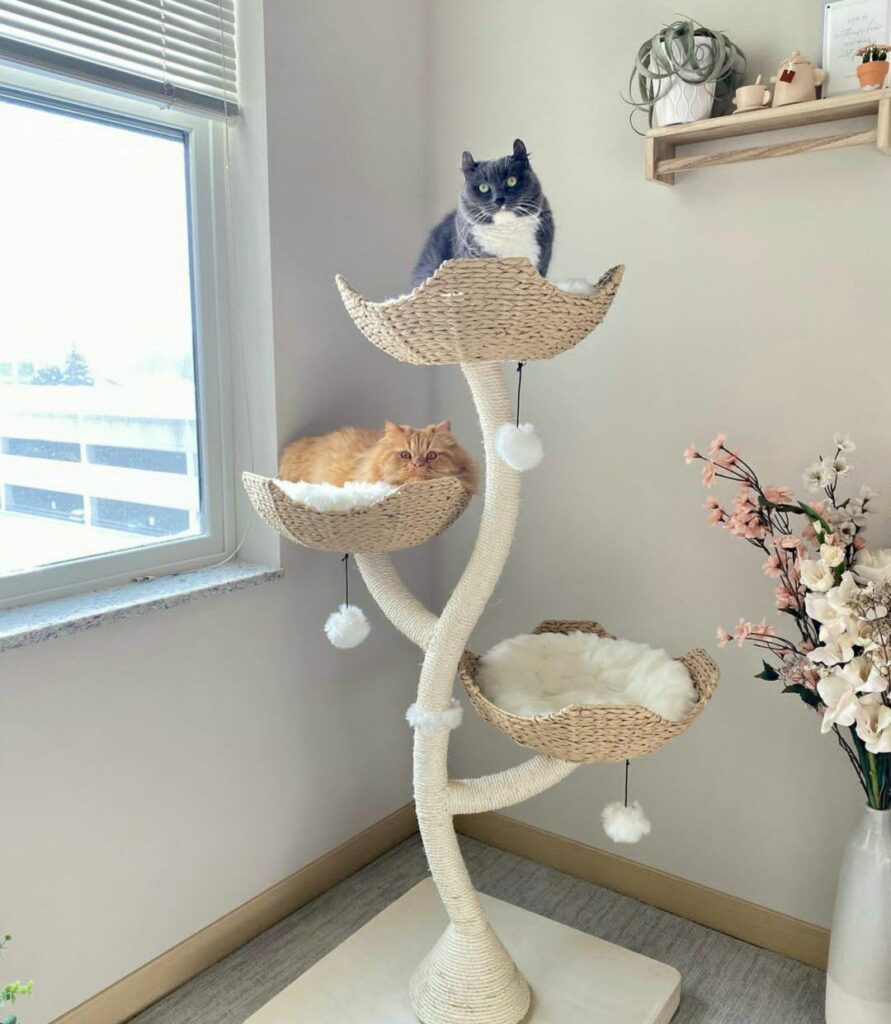
Praising your kitten for scratching on the scratching post is a fantastic way to encourage the desired behavior. Here’s why positive reinforcement is key and how to effectively praise your kitten:
Power of Positive Reinforcement:
- Creates Positive Association: When you praise your kitten for using the scratching post, you’re linking scratching with a positive outcome (praise, treats, petting). This strengthens the association and makes them more likely to repeat the behavior.
- Builds Confidence: Positive reinforcement builds your kitten’s confidence and trust in you. They learn that scratching on the designated post is the right thing to do.
- Effective Training Method: Positive reinforcement is a much more effective and humane way to train cats compared to punishment. It fosters a positive relationship and avoids creating fear or anxiety.
How to Effectively Praise Your Kitten:
- Verbal Praise: Use enthusiastic and happy words like “good kitty!”, “yes!”, or “amazing scratching!”.
- Treats and Pets: Pair verbal praise with treats or petting to create an even stronger positive association.
- Timing is Key: Praise your kitten immediately after you see them scratching the post. This ensures they understand what behavior is being rewarded.
- Be Enthusiastic: Show genuine excitement and happiness when your kitten uses the scratching post. Your positive energy reinforces the desired behavior.
Additional Tips:
- Combine with Playtime: Integrate scratching into playtime by using toys and positive reinforcement to encourage your kitten to use the scratching post.
- Multiple Scratching Posts: Provide several scratching posts in different locations and with different textures to cater to your kitten’s preferences.
- Patience and Consistency: Be patient and consistent with your praise and positive reinforcement techniques. It takes time for kittens to learn new habits.
By praising your kitten for scratching on the scratching post, you’re setting them up for success. This positive reinforcement approach promotes proper scratching behavior, keeps your furniture safe, and strengthens your bond with your feline friend.

